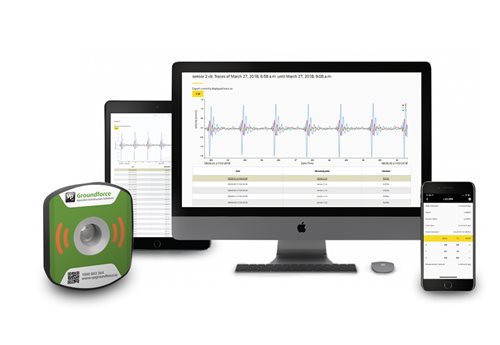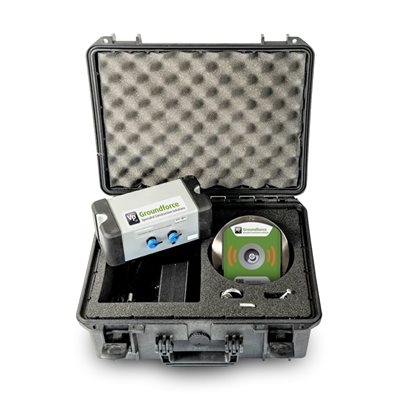What is the Groundforce Vibration Monitor?
This Vibration Monitor is the most efficient and high-quality vibration monitoring system on the market: it uses advanced Micro-Electromechanical Systems (MEMS) technology.
Where should it be used?
The Vibration Monitor is most commonly used in construction, demolition, highways, railways, tunnelling and infrastructure where excessive levels of vibration may potentially present a hazard.

Where can it be installed?
The Vibration Monitor is a compact and lightweight system with auto-axis alignment allowing it to be installed in any location and any orientation.
What are the benefits of using a Vibration Monitor?
With environmental concerns at the centre of our industries, key benefits include:
- Health protection
- Mitigation
- Cost-effectiveness
- Risk management
- Compliance
How easy is the installation process?
The Vibration Monitor is simply attached to a surface, such as a wall, floor or ceiling, using either a single screw or using the supplied DIN Base Plate for ground or floor mounting.
How are vibration levels processed?
The Vibration Monitor takes accurate real-time measurements and sends data wirelessly to the Honeycomb online platform; a mobile-optimised cloud-based management system. It is customisable in just a few simple clicks and gives uninterrupted remote monitor configuration and review of measured data.

How are the vibration level results delivered?
Instantly produced PDF, CSV and Excel reports of measured data can be scheduled to send to interested parties via email either daily or weekly. To connect the Vibration Monitor, you can use a device such as a smartphone, tablet, laptop or PC. The reports can include a summary of exceedances and, if required, can incorporate a company’s logo.
How accurate are the reported results?
The Vibration Monitor provides simultaneous PPV & VDV measurements in accordance with UK measurement standards (BS5228-2, BS7385-2 & BS6472-1) and is independently tested for compliance with DIN45669-1:2010, SBR-A and fully CE Marked.
Is vibration monitoring a regulatory requirement?
The following criteria must be considered:
- Compliance with local government Planning and Construction Guidance
- Conformance with Party Wall Requirements as agreed with Adjacent Stakeholders
- Monitoring the impact on nearby sensitive receptors to reduce nuisance and prevent damage to structures
- In line with relevant standards BS5228-2: 2009, BS7385-2: 1993
Take a look at our Vibration Monitor to find out more information and enquire today.